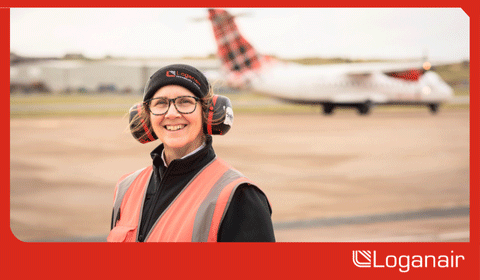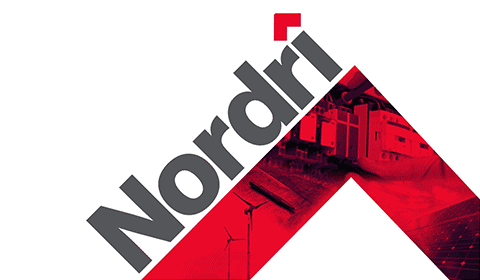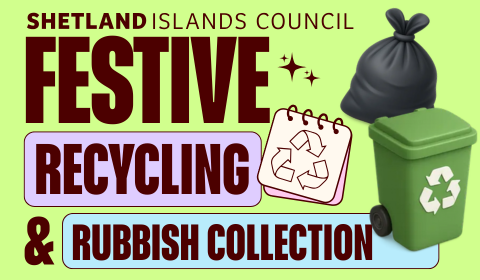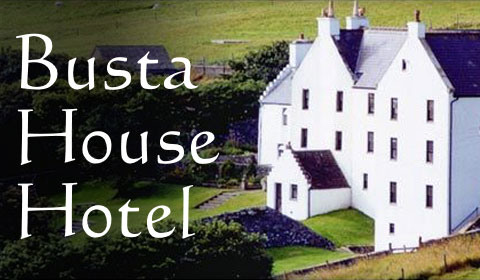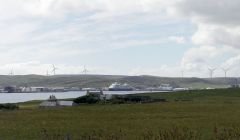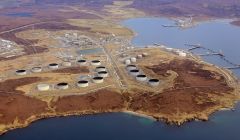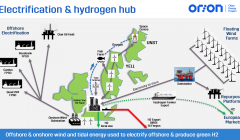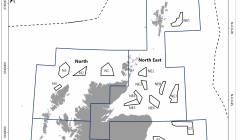Energy / ‘Industrialisation’ concern from community council ahead of ammonia plant meetings
Statkraft said in response that the Tagdale plant could create around 20 new jobs and also support the district heating network
THE “INDUSTRIALISATION” of Shetland from energy developments was a hot topic at Lerwick Community Council’s (LCC) meeting on Monday – with concern over the impact on everything from tourism to mental health.
The discussion came as members spoke about an upcoming meeting with energy developer Statkraft about its proposed ammonia plant near Dales Voe.
In a letter to the community council, a company representative said: “Ammonia is a common ingredient for fertiliser production, critical to agricultural food production, but also with important applications as a carbon-free marine fuel and in chemical production.
“Should this project be consented, it will help to secure the UK’s domestic supply of ammonia and help to ensure that the green energy generated on Shetland is used to its full potential.”
They also said there are plans for facilities to allow ammonia to be transported from the site by ship.
Statkraft will hold two public information events later this month but also plans to meet directly with LCC, despite the development being located just outside the community council boundary.
The discussion at Monday’s meeting elicited concerns about the development as well as the wider suite of energy projects in Shetland.
Andy Carter expressed concern on health and safety grounds should something go wrong with ammonia production – claiming the substance is “very dodgy stuff”.
SIC councillor Stephen Leask questioned where the water needed for production would come from.
And Jonathan Duncan expressed strong concern about the “continued industrialisation” of Shetland.
He said there was “application after application after application”.
SSEN’s controversial 103-turbine wind turbine went live in the central mainland last year, while Statkraft is planning three smaller wind farms – including the Mossy Hill development near Lerwick – in addition to Tagdale, plus a larger plant at Scatsta.
In addition, SSEN is working on a series of infrastructure projects in the coming years, including so-called pylons and more converter stations, partly to facilitate offshore wind to the east of Shetland as well as a second subsea HVDC cable to Shetland.
Become a member of Shetland News
Duncan said it was fair enough taking the lead of Orkney, where community wind farms are in the pipeline, or North Yell’s Garth wind farm, which puts money back into the local development council.
“But we just seem to be inviting anybody in to just industrialise the heritage of Shetland,” he said.
He added that fuel poverty is repeatedly talked about as a concern locally but “here’s another scheme that’s going in not for the benefit of Shetland”.
In response, a spokesperson for Statkraft said on Tuesday morning that the Tagdale plant could bring an estimated 20 new local jobs to Shetland, as well as the opportunity to “upskill the existing oil and gas workforce”.
They also confirmed that a key community benefit could be supporting the district heating network – “which would help bring down bills, something that many people in Shetland have asked for when we’ve engaged on previous projects”.
The spokesperson also confirmed that at the moment there are no direct users of ammonia in Shetland, “but there is of course potential for it to be used if there is a market for it in future”.
Regarding health and safety concerns, the spokesperson said ammonia has been “widely and safely traded for decades”.
“This means there are already established supply chains, transport vessels, handling procedures, and storage terminals across the world,” they said.
“The project will be subject to rigorous statutory permitting regimes to ensure its safe construction and operation.
“The main regulation will be COMAH (Control of Major Accidents and Hazards) which are designed to prevent and mitigate the effects of major accidents involving dangerous substances at industrial sites within the UK.
“These regulations require operators to take measures to prevent major accidents, limit their consequences to people and the environment, and to have internal and external emergency plans in place.”
Meanwhile in response to the query about water supply, Statkraft said it will be sourced from Lerwick’s waste water treatment works which would otherwise be released into the sea.
“This means the project will obtain water in the most sustainable way and will not be placing new demands on Shetland’s fresh water supply,” the spokesperson said.
At Monday’s meeting community councillor Amanda Hawick, who chairs the local tourism association, also raised concern about the impact of energy developments across Shetland.
She said there were already obstacles in people coming to Shetland, but there is a risk that what people come to the isles for may be “destroyed”.
Hawick suggested tourism is “forgotten about” among the “big players”, raising concern over aspects like culture, heritage, fauna and wildlife.
“It’s very alarming, it’s very worrying,” she said.
Meanwhile Leask said there was a feeling of the SIC being “emasculated” in what it could do.
Although the Tagdale plant will have a capacity greater than 50MW – 60MW to 80MW – Shetland Islands Council will consider its planning application and not the Scottish Government because it is not deemed a generator like wind or solar power.
Despite this, Leask noted in the past a planning application related to the Viking wind farm was rejected by the SIC but then overturned on appeal by the Scottish Government, at “considerable cost” to the council.
He reiterated his concern about SSEN’s plans to bring in “pylons”, “which for me is quite horrific”.
“All these poles and things like that is actually making the wind generators look like elegant and pretty in fact in comparison to the destruction that Jonathan speaks about,” Leask said.
He also questioned the effectiveness of the Shetland Wind Environmental Advisory Group (SWEAG), which was set up during the Viking construction.
“I feel that they’re really not doing a hell of a lot,” he said.
“I feel that we’re being let down by SWEAG.”
Community councillor Diana Winfield meanwhile said natural heritage “seriously benefits people’s mental health”.
“We need to preserve it in Shetland for own people, not just because it’s valuable in its own right and it’s valuable for tourism, but it’s valuable for our future mental health as islanders,” she said.
There was further criticism for the public consultation events held by energy developers, with Duncan claiming they do not “pay any heed to what you say”.
Statkraft is holding an event at the Sound Hall in Lerwick on Wednesday 19 November between 10am and 4pm, and then at the Tingwall Hall from 1.30pm to 7pm the following day.
On a wider note, Hawick also said the primary school roll dropping across Shetland, as well as birth rates, was a “massive concern”.
Carter said tourism will be especially conscious of this, noting the difficult in getting a cup of coffee sometimes.
The cafe/bar in Shetland Arts venue Mareel will remain closed during November, apart from when events are being held in the building, due to staff shortages.
Carter questioned what is going to happen in 10 or 20 years’ time, adding: “We dunna have enough people here”.
Become a member of Shetland News
Shetland News is asking its readers to consider paying for membership to get additional perks:
- Removal of third-party ads;
- Bookmark posts to read later;
- Exclusive curated weekly newsletter;
- Hide membership messages;
- Comments open for discussion.
If you appreciate what we do and feel strongly about impartial local journalism, then please become a member of Shetland News by either making a single payment, or setting up a monthly, quarterly or yearly subscription.






